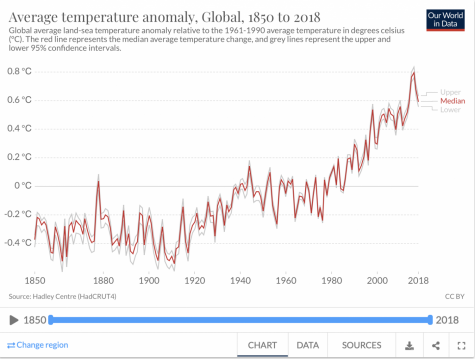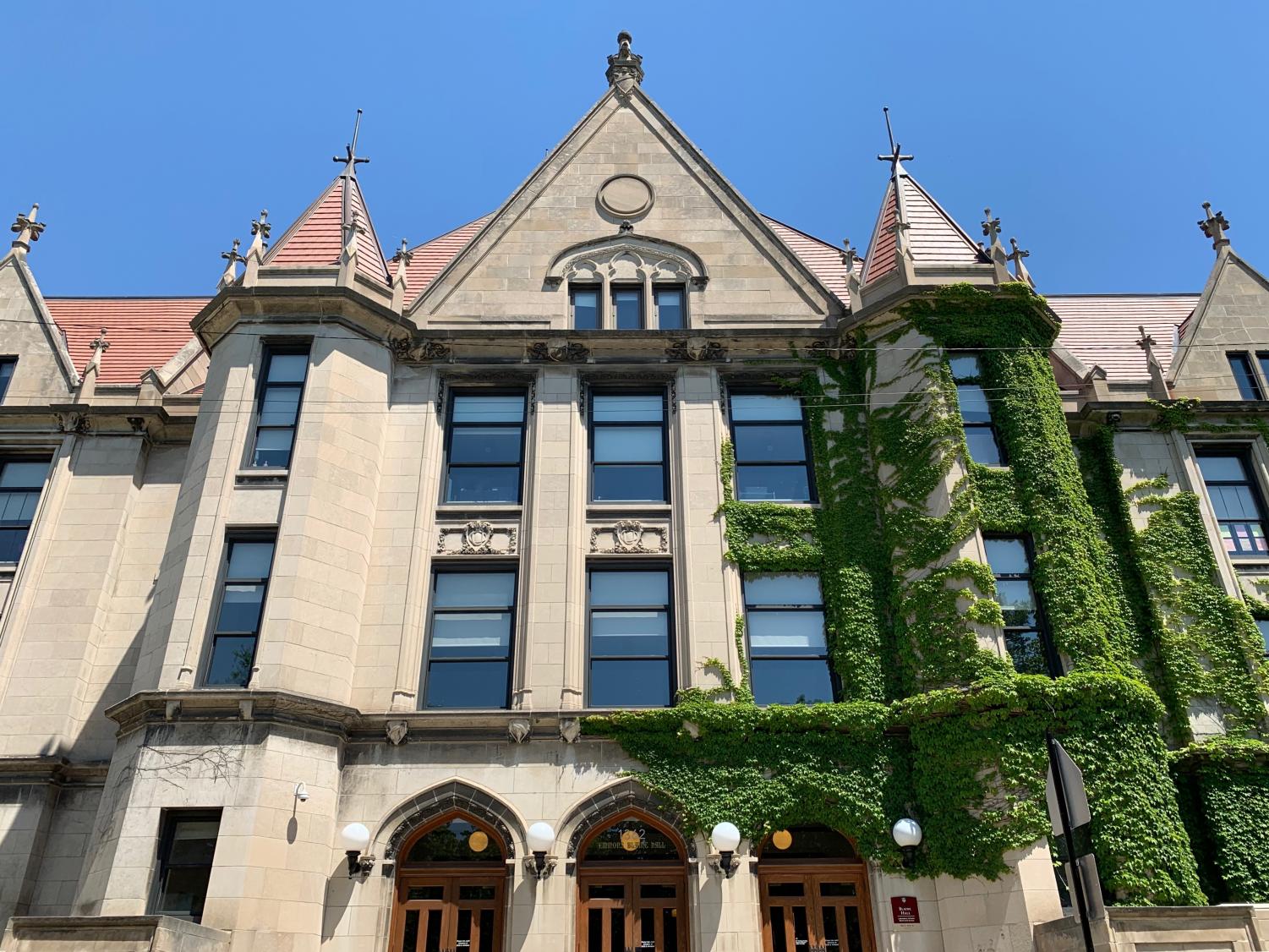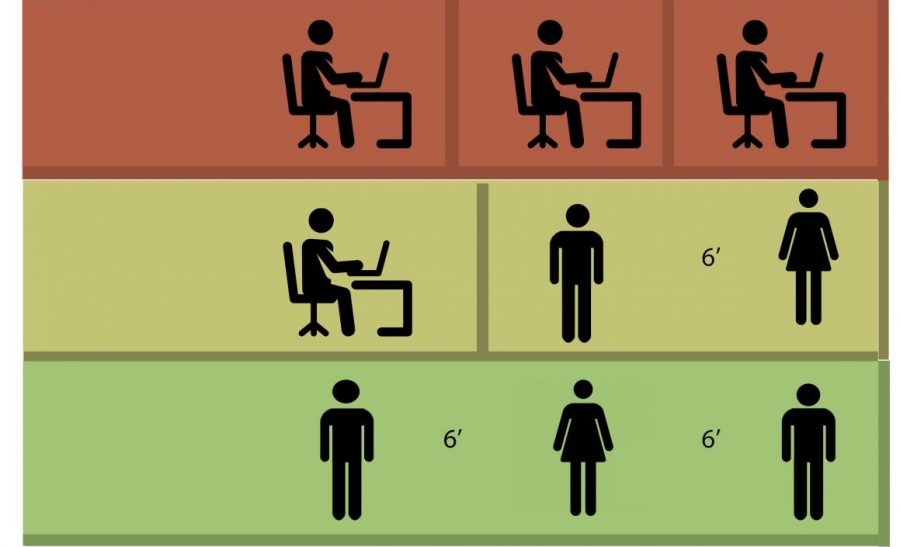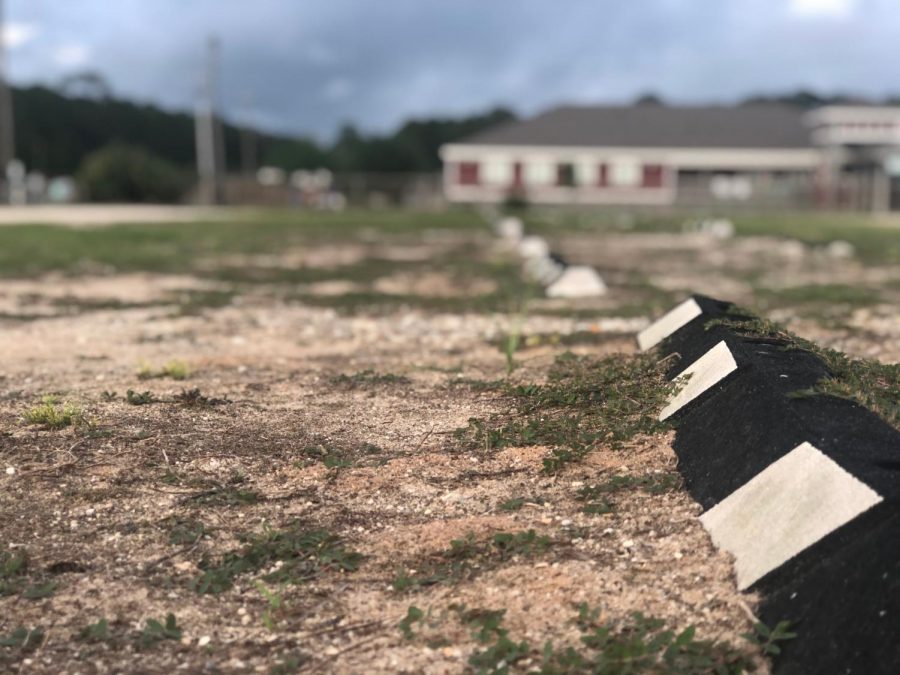What life will look like in the post-COVID-19 world
June 8, 2020
Remote, hybrid, altered in-person options considered for return to school
The three main options for a return to school would be remote, hybrid or altered in-person.
Looking forward to the 2020-21 school year, three possible options for the Laboratory Schools’ structure are under consideration: an altered but in-person structure, a continuation of remote learning, or a hybrid between the two.
The high school administrative team has begun early stages of planning across the Laboratory Schools to coordinate schedules where students could stay mostly separated from each other. However, nothing certain can be said until there is a clearer picture of the coronavirus pandemic impact will look like by late summer. The administrative team is also collaborating with other schools to work out a plan.
“Because of the schedules, the way we think about time not only impacts us but other schools,” Noah Rachlin, dean of teaching and learning, said. “There are faculty who teach across schools, and there are families who have students in multiple schools, so what we want to do is make sure that the way we’re thinking about things in our school also works with the way other schools are thinking about their schedules.”
While many schools in the United States remain closed, schools in Germany have reopened and many restrictions have been lifted. As of late May, Germany reportedly had the eighth most cases and deaths for COVID-19.
Rosa Leuz, a tenth-grade student at Goetheschule school in Germany, near Frankfurt, and said the schools have been managing the school openings really well and the risk of infection has been low. The hygiene standards require that the students have the same desk every day and the windows are opened to allow air to circulate through the classrooms. Less than one-fourth of the students are in school at the same time.
Susanne Pralle teaches German at Lab and coordinates the German American Partnership Program for the German exchange trips.
“They have staggered the class, too, so not everyone is in the hallways during passing periods as well,” Ms. Pralle said. “Everybody is ending at a different time and German schools mostly do not have lockers because of the different class system.”
While this may seem like a risk, the school’s precautions ensure that the students remain physically separated. If students have pre-existing diseases or medical conditions, they cannot come to schools. Also, if a teacher is over age 60, pregnant or nursing, they cannot come to school either. The stairways are split between up and down so the students stay apart.
In these early stages however, it is unclear whether Lab will take these same precautions in fall of 2020.
Rosa said, “All classes were divided into half (group A and group B) and chairs setted with distance. So every group goes to school every second day — for example, Monday group A, Tuesday group B, Wednesday group A again.”
If Lab were to take this approach, scheduling and the positioning of students would have to be taken into account. Throughout the summer, Lab administrators and faculty will continue to plan and collaborate for the uncertain future.
Remote
If coronavirus continues to keep Chicago at home, Lab will continue remote learning. Students will get their assignments through Schoology and meet synchronously using Zoom or Google Meet.
During spring 2020, surveys were given to students through Google, in order to get feedback about remote learning.
“We have heard from the feedback we have been given a real improvement in communication with student’s understanding our schedule with more consistency which leads us to believe that things like a single template and monday morning posts and systems that create predictability and consistency are really valuable so we try to think about maintaining that consistency,” Noah Rachlin, dean of teaching and learning, said.
An issue with remote learning has been student’s ability to cope with stress according to the surveys.
Rozalyn Torto, music department chair, said that next year they would attempt to continue to teach music first and direct the ensemble second. They would also continue to assign projects with topics from music history to theory.
In preparation for a continuation of remote learning Lab administrators and faculty will continue to assess student feedback.
Hybrid opening
If coronavirus decreases over the summer, some Lab students may continue remote learning while some may be doing in-person learning. This would require a schedule that gives all students the time at school they need to learn but is also consistent enough with levels of coronavirus continuing to change.
In Germany the schools started out by taking a hybrid approach. They gave top priority to students who needed in-person learning most.
“One of the things Lab may need to prepare for with a hybrid or reopening I think the important thing is flexibility. One of the things that Germany is discovering is that with people coming together you will get many spikes again. So Lab should be prepared for the infection rate to go up,” world languages teacher Susanne Pralle said.
At Lab, this approach might raise problems about all students getting an equal experience and the coordination of dividing students and faculty consistently. However, if coronavirus becomes less of an issue over the summer, this approach will be preferable to fully remote learning.
Altered in-person learning
While by no means normal, this approach will allow students to come to school as long as they maintain social distancing. This poses some potential difficulties maintaining distance between students especially in the hallways. However, the importance of going back to the routine of in-person learning cannot be denied.
It is really important to open the schools because not all parents can work well with kids at home and not all parents can be good teachers, Rosa Leuz said, and remote learning is widening class and gender gaps. She added that not all children and families have the same home situations or opportunities. Some students don’t have the option to use a computer, some students may need to babysit their siblings and don’t get help if they need it.
Lab is still in the earliest stages of making plans to keep students separated. However, while the rate of COVID-19 cases seems to be lessening, coronavirus will still be a problem in the fall and school may have to stay remote.
Environmental stability
The pandemic had a profound impact on carbon emissions
While the coronavirus-induced stay-at-home order has sent the national and global economies racing toward a depression, it has also significantly reduced carbon emissions practically everywhere in the world. The inverse relationship between environmental sustainability and economic growth raises questions as to whether society will ever find a middle ground between the two. The governmental approach towards these issues moving forward from the coronavirus specifically could hold critical implications for future generations.
Global warming is caused by the greenhouse gas effect, which results from the accumulation of pollutants in the atmosphere. One of the main causes of an increase in pollution is an increase in the production of goods, which is directly related to economic growth.
History has shown that when the economy booms, carbon emissions increase significantly. Similarly, when the economy falls into depression, carbon emissions reduce significantly.

At this point, it may come as no surprise the periods of time with the lowest rates of carbon emissions, and comparatively low temperatures are the periods of time where the economy has struggled economically. Notably, one of these periods started around 1918, which marks the start of the 1918 Pandemic.
These same trends that have presented themselves true over the past 100 years are now present during the coronavirus pandemic. Just a few months into the crisis of the coronavirus, the economy has slowed significantly, leaving the U.S. level of unemployment equivalent to that of the Great Depression. As a result, however, carbon emissions on a global level have dropped significantly.
According to a study by CarbonBreif, in the first four weeks of the shutdown in China, carbon emissions dropped by upwards of 25%. The United States is expected to see a similar drop in carbon emissions in the next year. In fact, a recent report predicts that carbon emissions will fall approximately 2.6 billion tons globally this year, which is an 8% drop from 2019.
However, in a recent article from The New York Times, Glen Peters, the research director at the Center for International Climate and Environment Research in Norway explained that these decreases in carbon emissions aren’t significant or long-lasting enough to make a long-term change.
This has proven true in places like China, where the economy has started to open up again, and as a result, carbon emissions have rebounded. The same risk applies in the United States, as many states have started to open up again as well.
According to Junior Orla Malloy, a large advocate for environmental sustainability, finding a long-term solution for environmental issues will require a trade-off.
“Unlike economic growth, there’s no immediate benefit,” Orla said. “ Finding solutions for current environmental issues is about personal and large-scale sacrifice.”
As more nations start to reduce the restrictions on their economies, leaders are going to be faced with an important choice. On one hand, carbon emissions have the potential to grow rapidly if nations rely on dirty energy sources to rebuild their economies.
According to Orla Malloy this option overlooks any potential long-term implications.
“Many leaders across the globe are failing to consider how our economy is entirely dependent on the resources that nature provides,” Orla said. “When those resources run out, I have no idea what will happen to humanity.”
The other option, however, is to work toward rebuilding economies with environmental sustainability in mind. Many nations already demonstrated their support for this option through participating in the Petersberg Climate Dialogue XI last April. Leaders and important figures from France, Germany, Japan, and other nations around the world participated in this conference to encourage nations to invest in technology that would significantly reduce emissions as economies recover. To hear statements from the conference, you can watch these videos.
The Trump administration’s recent finalization of the rollback of fuel efficiency standards suggests, however, that moving forward from the coronavirus pandemic, the United States isn’t likely to prioritize a reduction in carbon dioxide emissions.
“I’ve lost hope for how our current government is dealing with COVID-19 and climate change,” Orla said. “Climate change is really overwhelming, and our administration plays on what the American people like to hear.”
The environmental impact of coronavirus spans in importance beyond the pandemic itself, in that the coronavirus merely highlights a trend between economic stability and environmental sustainability that has existed for years. As nations recover and rebuild across the world, now is a more pressing time than ever for nations to consider their priorities moving forward, as choices now have the potential to significantly influence the state of the future world.
Stuck at home, students reflect on their world views
Staying at home all this time made people think about societal changes they want to see when we return to normal.
Because of the new lifestyle caused by the coronavirus pandemic, many Laboratory Schools students face new obstacles. While confined to their homes, students are reflecting on their world views and altering their mindsets, fueled by social changes caused by the coronavirus pandemic. The difficulty of this situation seems to have promoted increased awareness of societal issues in a younger generation.
Students are beginning to question the current structure of society and consider what they hope will change in response to this crisis.
“After this is over, I know that our society will start to give these essential workers, who are risking their well-being right now, the respect they deserve,” ninth-grader Jana Lesniak said. “I feel like we almost need to have a complete economic and social upheaval.”
Jana’s viewpoint has become popularised by the increasingly visible suffering and importance of low-income workers. Jana described her anger that many of the workers deemed essential are paid a minimum wage and that these workers less than the government-issued stimulus checks.
“In these times, I wonder what the world will be like after quarantine. I think that it’s going to take a long time for people to feel comfortable with each other again,” sophomore Kara Tao said.
Some students question how health codes will change in response to the rapid spread of COVID-19. Others wonder if the minimum wage will rise in response to the currently realized importance of low-income workers.
“One time I was just thinking about if Medici was going to close, and then before I knew it, I was looking up who qualifies for food stamps,” ninth-grader Esme Oliver said.


